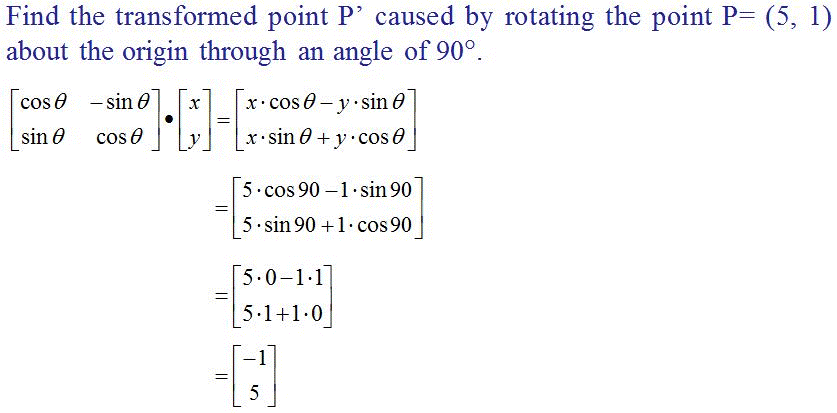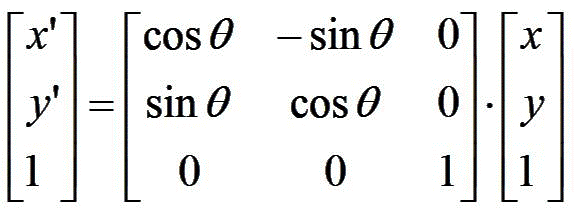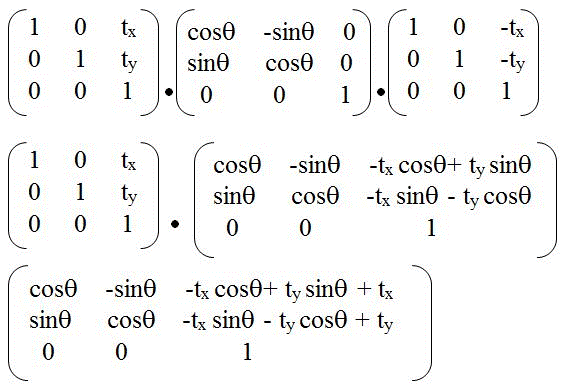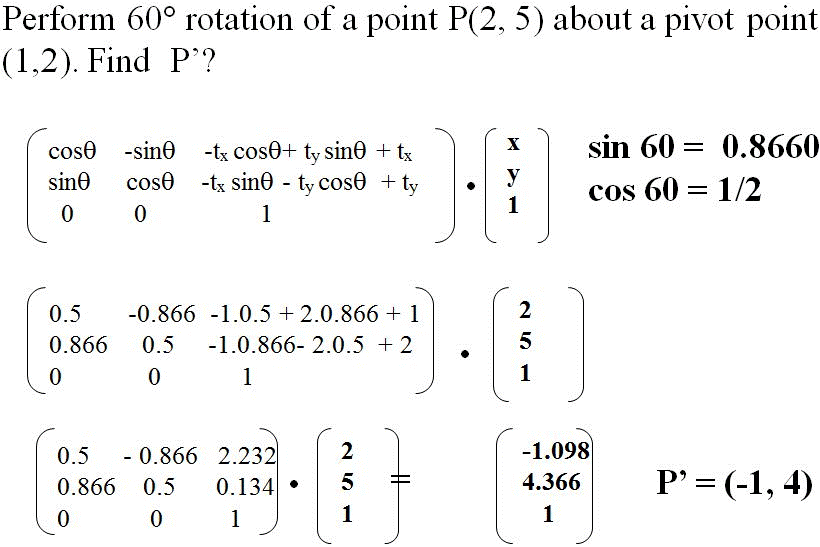| WR Home Topic Home | Chapter: 1 2 |
| <Previous | Next> |
Chapter 02
Basics of Animation and Forward Kinematics
Page 11
Forward Kinematics: Rotation about an arbitrary pointThe previous equations:
x' = x.cosθ – y.sinθ
y' = x.sinθ + y.cosθ
Can be written in matrix form as:

Which is one and the same thing, as shown in the following example:

The matrix can also be written as (Homogeneous Coordinates):

Previously the rotation was done w.r.t origin. Now if the Point(x,y) is to be rotated w.r.t a Point(xc, yc) then what could be done?
Where xc stands for x_center and yc stands for y_center
One easy way of achieving it is "shifting of origin"
- Shift the point (xc, yc) to the origin
- Rotate θ degree along the origin
- Shift the result back to (xc, yc) from the origin
The equation shown below, combines the three steps:
Modified_Vector = Translate Rotate TrabslateBack Old_Vector

Or, in matrix form as:

The following example helps in understanding the concept:

The Translate Rotate TrabslateBack matrices can be solved to form the following equation pair:

(xc, yc) is the center point or the pivot point, hence it is sometimes written as (xp, yp) as well.
Now, can you write a MATLAB® program to rotate a Point(x, y) w.r.t. another Point(xc, yc) to angle θ degree in a given direction.
Question: If the Point(9,3) is rotated 23° counter-clockwise w.r.t Point(2,6) then what co-cordinate it will reach?
HINT: Use the above equation pair.
x' = ( x - xc )cosθ - (y-yc)sinθ + xc
y' = ( x - xc )sinθ + (y-yc)cosθ + yc
x' = ( 9 - 2 )cos(23) - (3 - 6)sin(23) + 2
y' = ( 9 - 2 )sin(23) + (3 - 6)cos(23) + 6
Solving the above will give numeric value for the new point (x', y')
If the point was to be rotated clockwise instead, then simply replace (23) with (-23)
| WR Home Topic Home | Chapter: 1 2 |
| <Previous | Next> |